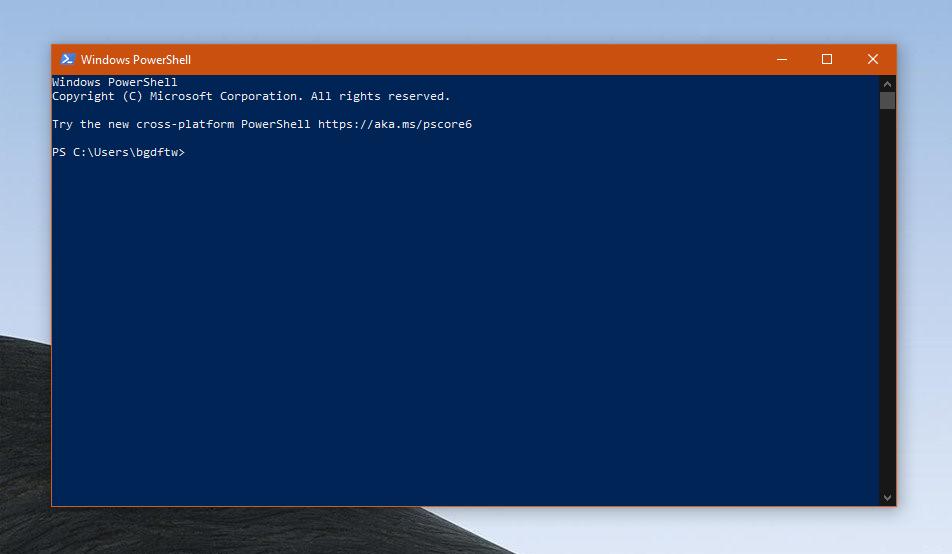



Implicit remoting is the act of running a module that then creates a proxy function to send the commands to an automatically created remote session and return the results. Explicit remoting is when you create a session and then consume that session intentionally to run remote commands. In case you may not remember, there are two types of remoting within PowerShell.
After the final module utilizing WinPSCompatSession is removed, destroy the session.  Cmdlet parameters are serialized and only the final result is returned. The module is loaded via implicit remoting via a proxy module from the users $env:Temp folder. Upon importing the first module, a remote session named WinPSCompatSession is created to Windows PowerShell 5.1. The actual process follows the steps shown below: Any data sent to and from the module is then serialized and exposed to the PowerShell 7 session. In the background, Windows PowerShell is running a version of the imported module. With all that discussion how does the Windows Compatibility layer work? The modules are not loaded into the current PowerShell 7 runtime. How Windows Compatibility Works in PowerShell 7 That is not to say that some modules won’t function if they utilize remoting to operate on a remote Windows system, but in this article, we are discussing locally loaded modules needing compatibility. One big note here is that these compatibility layers are Windows-specific, and do not apply to the cross-platform nature and ability of PowerShell 7. Additionally, there are core engine changes and Windows-specific APIs that a module may need to update to work properly with PowerShell 7. NET Framework (4.x) has and may prevent modules from working correctly with. NET Core 3.1, there are many breaking changes that. Windows-specific API’s not available in PowerShell 7. Windows PowerShell core engine dependencies. This can be due to many different reasons, but generally, it’s due to one of the following. There are still many modules that have not been updated to work with PowerShell 7. In this article, we explore how the Windows Compatibility layer works within PowerShell 7 and what you need to be aware of. Of course, with any compatibility layer, there are always situations that will not work properly or unexpected behaviors. Instead of needing to switch between multiple versions of PowerShell depending on the tasks at hand, PowerShell 7 has added compatibility layers for existing Windows PowerShell compatible modules. With the advent of PowerShell Core and PowerShell 7, not all modules have been updated to be compatible with core engine updates or cross-platform accessibility.
Cmdlet parameters are serialized and only the final result is returned. The module is loaded via implicit remoting via a proxy module from the users $env:Temp folder. Upon importing the first module, a remote session named WinPSCompatSession is created to Windows PowerShell 5.1. The actual process follows the steps shown below: Any data sent to and from the module is then serialized and exposed to the PowerShell 7 session. In the background, Windows PowerShell is running a version of the imported module. With all that discussion how does the Windows Compatibility layer work? The modules are not loaded into the current PowerShell 7 runtime. How Windows Compatibility Works in PowerShell 7 That is not to say that some modules won’t function if they utilize remoting to operate on a remote Windows system, but in this article, we are discussing locally loaded modules needing compatibility. One big note here is that these compatibility layers are Windows-specific, and do not apply to the cross-platform nature and ability of PowerShell 7. Additionally, there are core engine changes and Windows-specific APIs that a module may need to update to work properly with PowerShell 7. NET Framework (4.x) has and may prevent modules from working correctly with. NET Core 3.1, there are many breaking changes that. Windows-specific API’s not available in PowerShell 7. Windows PowerShell core engine dependencies. This can be due to many different reasons, but generally, it’s due to one of the following. There are still many modules that have not been updated to work with PowerShell 7. In this article, we explore how the Windows Compatibility layer works within PowerShell 7 and what you need to be aware of. Of course, with any compatibility layer, there are always situations that will not work properly or unexpected behaviors. Instead of needing to switch between multiple versions of PowerShell depending on the tasks at hand, PowerShell 7 has added compatibility layers for existing Windows PowerShell compatible modules. With the advent of PowerShell Core and PowerShell 7, not all modules have been updated to be compatible with core engine updates or cross-platform accessibility.







 0 kommentar(er)
0 kommentar(er)
